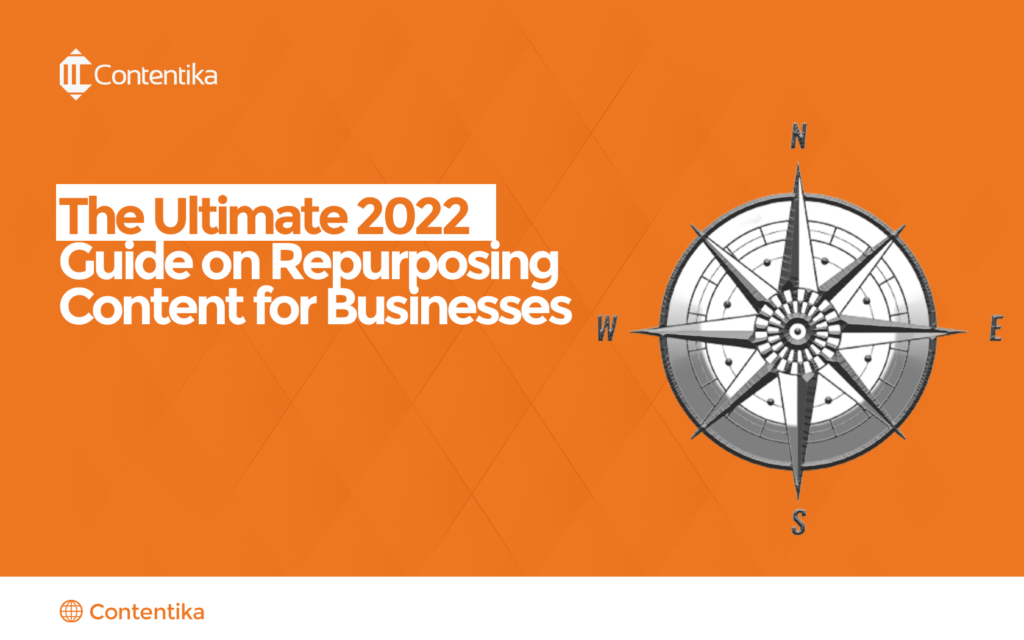The Ultimate Guide on Repurposing Content for Businesses

Are you looking for ways to get more mileage out of your content? If you’re like most business owners, you’re probably always on the lookout for ways to get more bang for your buck – repurposing content is a great way to do that. Reusing and repurposing old content can save time and money while still delivering fresh, relevant, and engaging content to your audience. This guide will show you how to repurpose content for maximum impact. We’ll cover everything from how to choose the right pieces of content to the different ways you can go about doing it. What is Repurposing Content? Repurposing content simply means taking an old piece of content and using it in a new way. This could mean turning a blog post into an infographic or a video, or converting an ebook into a series of blog posts. By repackaging your content in different formats, you can reach a new audience, generate more leads, and achieve other marketing goals. There are endless possibilities when it comes to repurposing content. The key is finding creative ways to reuse your existing material to resonate with your audience in a new and different way. For instance, blog content can be easily repurposed into a video or a guest post for another blog or made into your blog. In the same way, you can create social media posts Youtube videos, or other video content. Sometimes, all it takes is to look at your content from a different perspective to come up with new ideas for how to repurpose it. Other times, you may need to do some research to find a suitable format for your audience. The important thing is that you take the time to consider all of your options before settling on a particular approach. Whichever, make sure the final product still contains your original message. It not only gives you a better chance of success but also helps you avoid any potential pitfalls. Why Repurpose Content? There are many reasons why business owners choose to repurpose their content. In most cases, it boils down to the following objectives: Get More Mileage Out of Your Content: Repurposing content allows you to get more mileage out of your existing content. Instead of creating all new content, you can reuse old material in a new way that still adds value for your audience. For example, let’s say you have a blog post that performed well, with many shares and comments. Repurposing this content into an infographic or video can help you reach even more people and drive further engagement. That way, you don’t have to create new content; instead, you can focus on repackaging and promoting your best-performing pieces. It is like hitting two birds with one stone. Saving Time and Money You would agree that creating high-quality content takes a lot of time and effort, especially when you’re doing so from scratch. If you’re only going to use that content once, you’re not getting the most out of it. Why? Because once you’ve published a piece of content, it doesn’t just disappear into thin air. It remains on your website (or wherever else you published it) and can continue to generate leads and traffic long after you hit the publish button. By repurposing old content, you can get more mileage out of it without having to start from scratch every time you want to publish something new. This saves you time and money – because you’re able to get more use out of the content you’ve already created. Reaching a New Audience When you create new content, it’s crucial to think about how you can reach a new audience with it. For example, if you have an entire blog post that’s doing well with your target audience, you can turn it into an infographic and share it on social media. This allows you to reach people who may not be familiar with your brand but who are interested in the topic you’re discussing. Generating More Leads One of the main goals of content marketing is to generate leads – repurposing content can help you do that. A good example is that you can turn an engaging ebook into a series of actionable blog posts and use it as a lead generation tool. By including a call-to-action (CTA) at the end of each post, you can encourage people to download your ebook and become leads. Building Relationships with Customers and Prospects Another goal of content marketing is to build relationships with customers and prospects. And one of the best ways to do that is by creating helpful and informative content. If you have just one blog post that’s doing well with your target audience, you can turn it into an email course and use it to nurture prospects and build customer relationships. By sending people valuable information regularly, you can keep them engaged with your brand and build a rapport with them. Increase Your Visibility Repurposing content can also help you increase your visibility and get more eyes on your brand. When you create new content, be sure to promote it across your social media channels, email list, and other marketing channels. You can also submit it to directories and aggregators such as Alltop and the like. The more places your content is, the more likely people are to find it and learn about your business. Boosting SEO Rankings Finally, repurposing content can also help you boost your Search Engine Optimization (SEO) rankings. When you publish new content, it gives you the opportunity to include relevant keywords and phrases that people are searching for. Optimizing your content for search engines can improve your chances of ranking higher in the search results. Not only that, but republishing old content also allows you to attract new readers and keep your existing readers coming back for more. Types of Content That You Can Repurpose Almost any type of content can be repurposed, including: How Best to Repurpose Content Now that you


